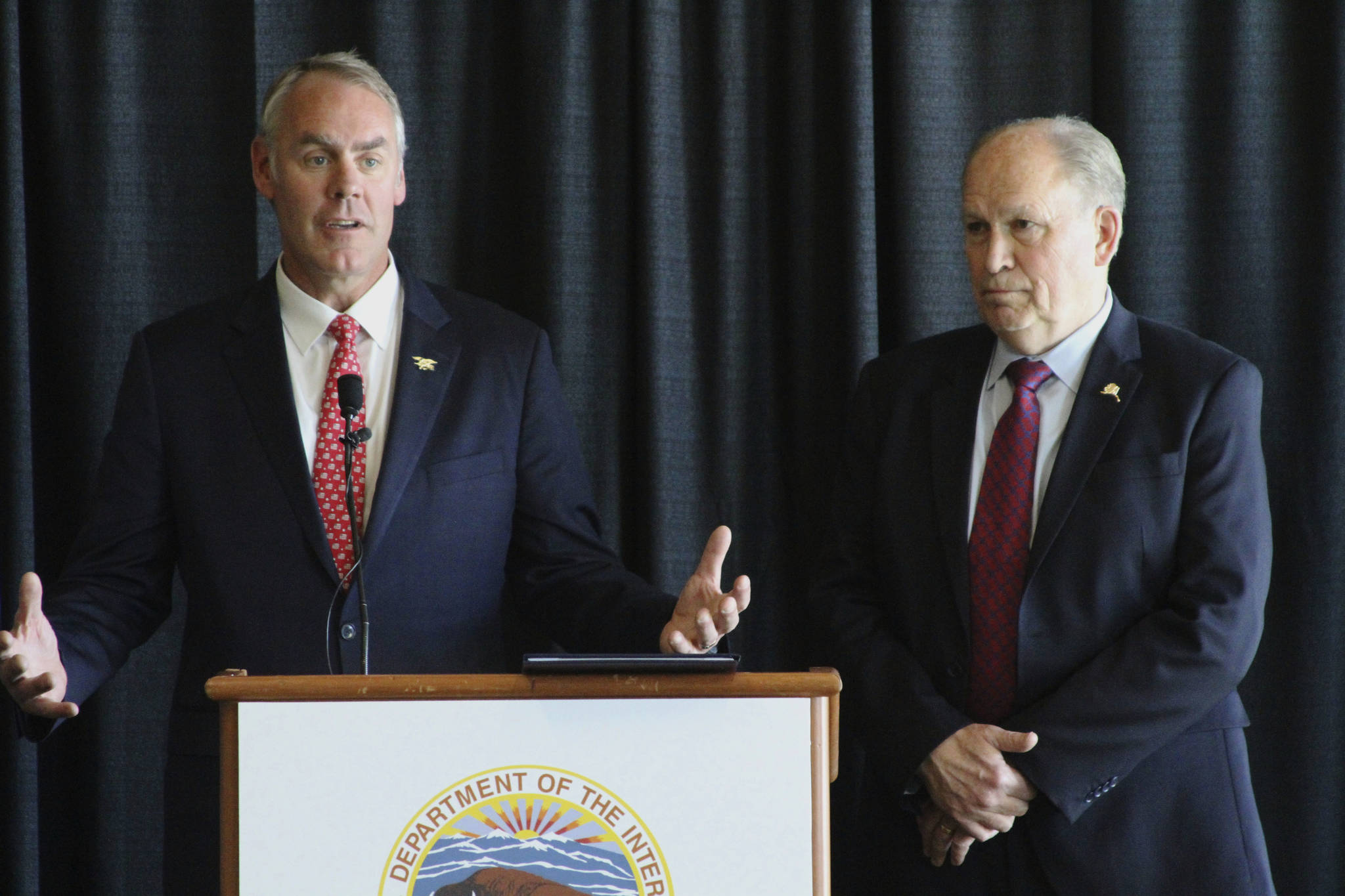ANCHORAGE — Interior Secretary Ryan Zinke has announced steps that could lead to expanded petroleum drilling in two areas of northern Alaska where environmental groups want protections for wildlife.
Zinke signed an order Wednesday that calls for updating assessments of crude oil and natural gas reserves in the coastal plain of the Arctic National Wildlife Refuge. The order also calls for review of a management plan approved under President Barack Obama that restricted drilling in part of the National Petroleum Reserve-Alaska.
Energy independence is a matter of national security, Zinke said, and revenues from public lands are a fraction of what they were in 2008.
“The president has tasked me to prepare our country to be energy dominant,” Zinke said in a speech to the Alaska Oil and Gas Association, an industry support group. “The only path for energy dominance is a path through the state of Alaska.”
Alaska Gov. Bill Walker, an independent who repeatedly criticized Obama for decisions restricting drilling, said Zinke’s order marked a bright, new chapter in Alaska history.
“We have played defense for so long, we forgot what offense was like,” Walker said.
Environmental groups condemned Zinke’s announcement. Congress has repeatedly rejected opening the refuge to drilling, said Kristen Miller of the Alaska Wilderness League. And Zinke’s order upsets a management plan that the Interior Department spent years crafting with tribes, local governments, the state and others.
“We and the hundreds of thousands of Americans who actively supported the current management plan will not sit idly by while this administration tries to give these public lands wholesale to the oil industry,” Miller said.
The Arctic National Wildlife Refuge covers about 30,000 square miles (78,000 square kilometers) in Alaska’s northeast corner. When Congress expanded the refuge in 1980, it declared that the 2,300 square mile (5,957 sq. kilometers) coastal plain should be studied for resource development.
The U.S. Geological Survey estimates the coastal plain holds 10.4 billion barrels of oil. An act of Congress can open the coastal plain to drilling and Zinke said Congress needs additional information to make that decision.
His order calls for developing a plan within 21 days to update petroleum assessments in both the refuge and the National Petroleum Reserve-Alaska, which could involve seismic testing.
The coastal plain has been managed as wilderness. Pregnant polar bears use it as a denning site. Muskoxen, more than 200 species of migratory birds and the Porcupine Caribou Herd use the plain.
The refuge is east of the trans-Alaska pipeline. The National Petroleum Reserve-Alaska, an Indiana-size tract created by President Warren Harding in 1923, is west of the pipeline.
The Bureau of Land Management in 2013 adopted a management plan that split the reserve roughly in half between conservation areas and land available for petroleum development.
The BLM estimated that lands available for development contained nearly three-fourths of estimated economically recoverable oil and over half of the estimated economically recoverable gas.
Zinke said all provisions of national environmental law would be enforced to protect surface resources.

